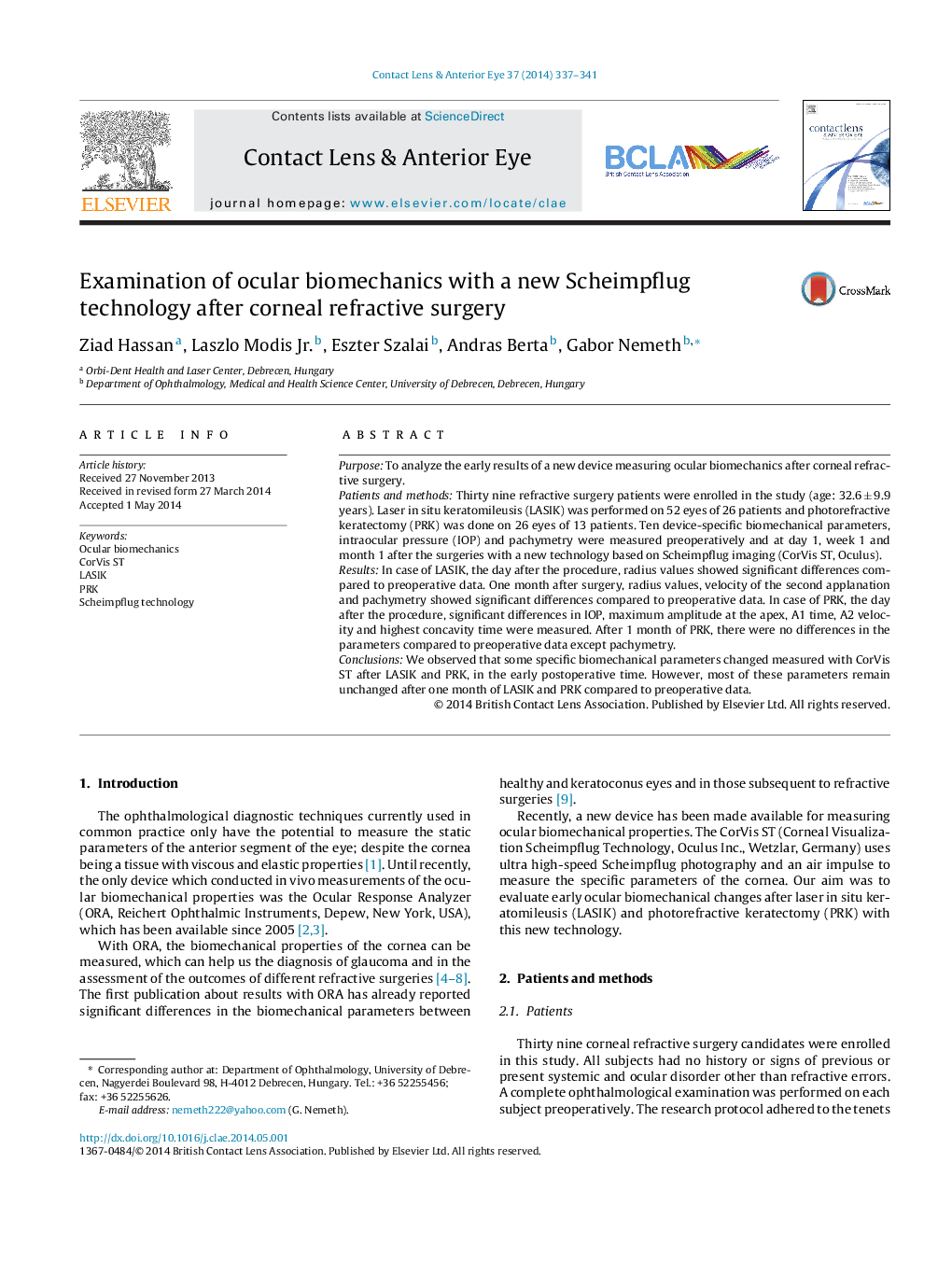| Article ID | Journal | Published Year | Pages | File Type |
|---|---|---|---|---|
| 2699133 | Contact Lens and Anterior Eye | 2014 | 5 Pages |
•Changes in corneal biomechanics happen after refractive surgeries.•Up until recently, these changes can only be detectable clinically by Ocular Response Analyzer.•Specific corneal biomechanical parameters can be measured by CorVis ST, a new, high-speed, Scheimpflug based technique.•Minimal, but measurable biomechanical changes were observed with Scheimpflug technology after 1 month of LASIK. These changes are correlated well with the magnitude of the corrected refraction error.•PRK seems to be a less invasive procedure biomechanically than LASIK, as examined by a CorVis ST device.
PurposeTo analyze the early results of a new device measuring ocular biomechanics after corneal refractive surgery.Patients and methodsThirty nine refractive surgery patients were enrolled in the study (age: 32.6 ± 9.9 years). Laser in situ keratomileusis (LASIK) was performed on 52 eyes of 26 patients and photorefractive keratectomy (PRK) was done on 26 eyes of 13 patients. Ten device-specific biomechanical parameters, intraocular pressure (IOP) and pachymetry were measured preoperatively and at day 1, week 1 and month 1 after the surgeries with a new technology based on Scheimpflug imaging (CorVis ST, Oculus).ResultsIn case of LASIK, the day after the procedure, radius values showed significant differences compared to preoperative data. One month after surgery, radius values, velocity of the second applanation and pachymetry showed significant differences compared to preoperative data. In case of PRK, the day after the procedure, significant differences in IOP, maximum amplitude at the apex, A1 time, A2 velocity and highest concavity time were measured. After 1 month of PRK, there were no differences in the parameters compared to preoperative data except pachymetry.ConclusionsWe observed that some specific biomechanical parameters changed measured with CorVis ST after LASIK and PRK, in the early postoperative time. However, most of these parameters remain unchanged after one month of LASIK and PRK compared to preoperative data.
